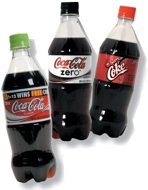 I’ve recently finished reading a book called “How Brands Grow” by Prof. Byron Sharp. Although it is not specifically technology venture focused, I would highly recommend it for any marketer, especially those marketing web-based B2C services such as we do at iWantMyName. The author questions much of the accepted wisdom on marketing and turns a lot of traditional textbook strategies about marketing on their head.
I’ve recently finished reading a book called “How Brands Grow” by Prof. Byron Sharp. Although it is not specifically technology venture focused, I would highly recommend it for any marketer, especially those marketing web-based B2C services such as we do at iWantMyName. The author questions much of the accepted wisdom on marketing and turns a lot of traditional textbook strategies about marketing on their head.
In a dynamic market, you can compete on price, but this is akin to an arms race and damages everybody. You can also compete by innovating and making your product more feature rich, but this is expensive and takes time. A third approach is to have a brand strategy in place from the outset that puts you in a stronger position when competition arrives. But product developers sometimes overlook branding as part of the overall value proposition.
In his book, Prof. Sharp argues that the quickest way to build a market is to make your brand physically and mentally available to consumers as well as targeting the large pool of dissatisfied customers that change brands each year. He scoffs at differentiation, citing cases like Coke and Pepsi who have attempted to differentiate within the cold drinks category, but whose respective market shares hardly change year after year.
 Coke and Pepsi are constantly fighting off cheaper brands and do so quite successfully because customers are prepared to pay a premium for a brand they feel connected to. That connection has been built up through generations of consistent positioning. Everybody recognises the Coke symbol, right? It’s irrelevant whether or not the product itself is substantially better than the cheaper ones. What matters is that customers mentally associate positive attributes with a brand such as trust, some kind of meaningful narrative plus “sticky” graphical images. Customers ascribe value to intangible features and this should not be overlooked.
Coke and Pepsi are constantly fighting off cheaper brands and do so quite successfully because customers are prepared to pay a premium for a brand they feel connected to. That connection has been built up through generations of consistent positioning. Everybody recognises the Coke symbol, right? It’s irrelevant whether or not the product itself is substantially better than the cheaper ones. What matters is that customers mentally associate positive attributes with a brand such as trust, some kind of meaningful narrative plus “sticky” graphical images. Customers ascribe value to intangible features and this should not be overlooked.
This post is an extension of a discussion on a value based strategy to competing in new markets started by Libby Russell on the New Zealand Software Alliance LinkedIn page.
